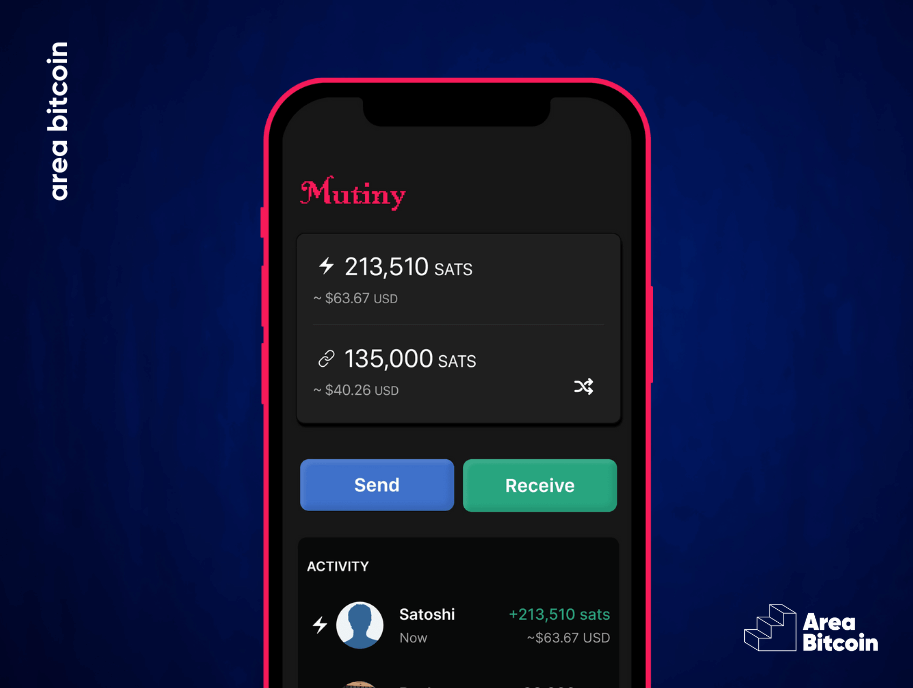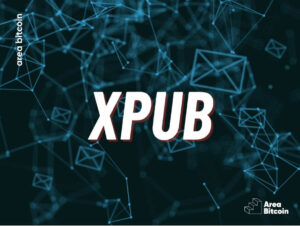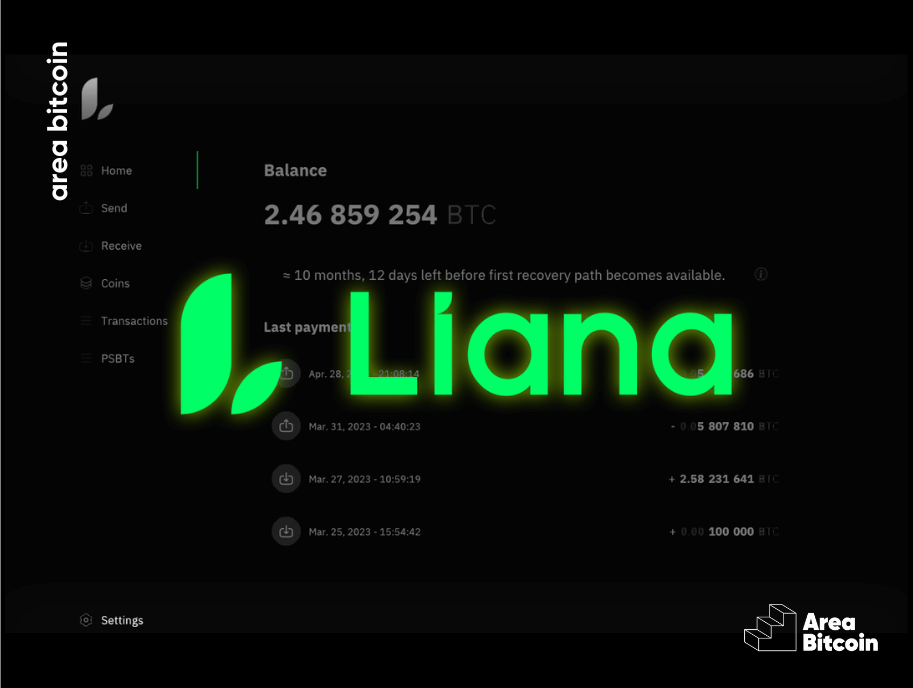Testing new wallets for securely storing your satoshis is always exciting, right? After all, it’s great to have a variety of options tailored to your needs, and having a backup plan in case your primary wallet fails is always wise.
Continuing our analysis and reviews of Bitcoin wallets, today we’re introducing Mutiny, a new non-custodial Lightning wallet that combines ease of use with the security needed for self-custody.
Beyond the basic features expected from a Lightning wallet, Mutiny is gearing up to introduce new functions that enhance user sovereignty and privacy.
Let’s explore what this non-custodial lightning wallet has to offer!
Table of Contents:
Who founded the Mutiny wallet?
Mutiny was founded by developers Tony Giorgio, Ben Carman, and Paul Miller. In 2021, the trio moved to Austin, Texas, to be closer to the vibrant Bitcoin community there.
How did the Mutiny wallet come about?
Before launching Mutiny, the founders were actively involved in Bitcoin meetups, hackathons, and various projects. Drawing on the knowledge they gained from these experiences, they set out to create the best Bitcoin wallet they could envision.
As a result, Mutiny launched in June 2023 as the first non-custodial Lightning wallet that operates as a web-based Progressive Web App. This was one of the wallet’s initial innovations. Since then, it has also become available as a mobile app.
What are the main features of the Mutiny wallet?
As noted earlier, one of the standout features of the Mutiny wallet is that it’s a non-custodial Lightning wallet accessible via the web. This means you have full control over your private keys and can access your wallet both through an app and a web browser.
Additional benefits of this wallet include:
- Integration with Nostr: this allows you to send satoshis with the Nostr app;
- Open source: anyone can review the wallet’s code and suggest improvements;
- Self-hosted: you don’t need to rely on their servers as you can host your own copy of the Mutiny Wallet, ensuring full sovereignty;
- Easy Lightning payments:sSimplifies the process as there’s no need to worry about opening or managing a channel yourself;
- Support for e-cash: you can transact with Lightning addresses via Fedimint;
- Separate balances: your balance locked in a channel and the balance available for use are clearly separated, enhancing user experience;
- Subscription service: the wallet has a Mutiny+ version that promises exclusive features for subscribers.
Furthermore, this web-based wallet is set to introduce:
- Synthetic USD: This feature will allow you to maintain a US dollar value in your wallet in a non-custodial manner (you control the private keys).
- Coinjoin: This privacy feature enables coin mixing, where users can earn yield by participating in collaborative transactions.
How does Lightning support and Just-in-Time channels work?
Mutiny leverages the Lightning Development Kit (LDK) from Block, a company founded by Jack Dorsey (former CEO of Twitter), to implement Lightning technology. This kit enables developers to tailor every aspect of Lightning integration into the wallet, including adapting it for web environments.
Without this tool, deploying a web-based wallet like Mutiny would be significantly more challenging.
Additionally, Mutiny has partnered with Voltage to provide Lightning payment channels known as Just-in-Time. These channels allow users to receive Lightning payments without the hassle of opening channels or managing liquidity themselves.
For less experienced users or those engaging in small transactions, the traditional process of opening channels on the Lightning Network can be daunting and costly. The Just-in-Time tool simplifies this by enabling new Mutiny users to receive satoshis via Lightning as soon as they open the app.
Makes things a lot easier, right?!
Related topic: what is Lightning Network?
Connection with Nostr
Nostr is an open protocol that enables the creation of global, decentralized social networks. This innovative protocol also supports the development of various other decentralized applications across the internet.
A notable feature of Nostr is the tipping system known as “zap.” With the Nostr Wallet Connect feature, users can send a tip in satoshis directly to a post that catches their attention on Nostr. Instead of just liking a post, you can express your support by sending satoshis, effectively “zapping” the post with a financial tip.
Mutiny offers direct integration with this feature. To use it, simply configure Mutiny in the Nostr Wallet Connect, and every “zap” received will deposit satoshis directly into your web-based wallet.
Once set up, each tip on Nostr or payment request will appear directly in your wallet, streamlining the process of receiving and managing digital currency interactions on this decentralized platform.
Integration with Fedimint
In addition to the Nostr configuration, Mutiny also added an integration with Chaumian E-Cash, as a way to integrate with the Fedimint protocol.
For some background, Chaumian E-Cash, also known historically as Digicash, is a creation by David Chaum that predates Bitcoin. This digital currency is designed to ensure high levels of user privacy and is employed in the framework of Fedimints.
But what are Fedimints?
Fedimints are federations where guardians are tasked with the custody of funds. This model is particularly beneficial for introducing new users to Bitcoin, as it alleviates the burden of fund custody.
Moreover, it preserves privacy and incorporates native backup systems for fund recovery through the federation, thus acting as supportive communities that assist newcomers in navigating the Bitcoin ecosystem.
How does the integration with the Mutiny Wallet work?
Mutiny’s integration of Chaumian E-Cash with Fedimint and Nostr aims to enhance the wallet’s usability and accessibility. By utilizing these technologies together, users of the wallet gain increased privacy and security, making transactions and overall user experience more accessible.
Furthermore, Mutiny has developed a system of federated Lightning addresses for subscribers of Mutiny+. This melding of Lightning technology with federations enhances the scalability and privacy of funds within these channels.
This setup allows users to receive funds even while offline, as the server linked with Mutiny secures the E-Cash tied to the user’s public key. This E-Cash can be accessed when the user comes back online, simplifying the experience and lowering the barriers to accessing Bitcoin.
How to use Mutiny?
Now that you’re familiar with what Mutiny is and its main features, let’s learn how to use it!
Mutiny can be downloaded for both Android and iOS. However, in the tutorial below, we’ll demonstrate how it can also be easily used on the web.
- Visit Mutiny website and click on “use in browser”:
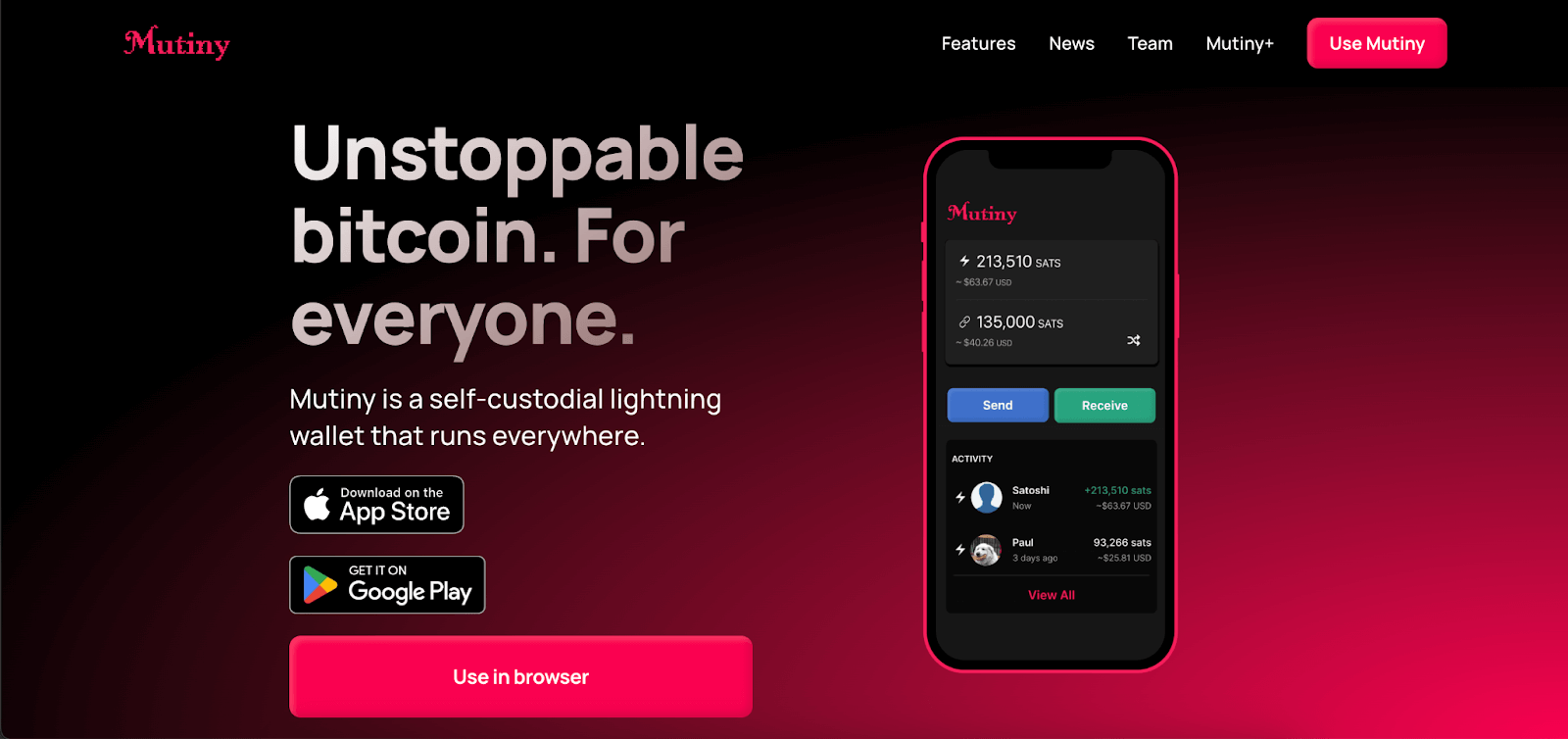
- When entering the web app, click on “new wallet”:
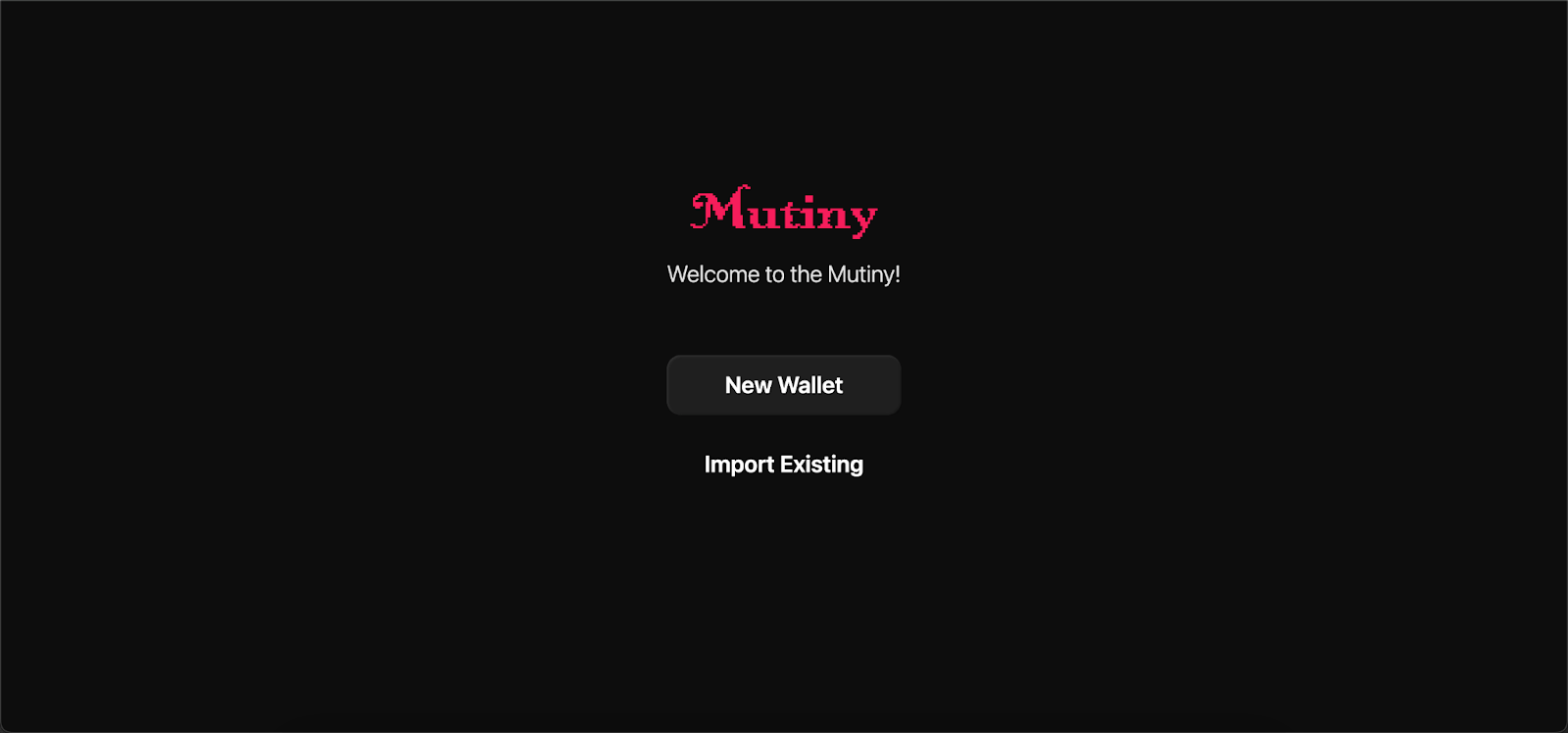
- Once you’ve created your Mutiny wallet, the following home screen will appear.

- Click on “secure your funds” and then on “tap to reveal seed words”. Write down your private keys in a safe place.
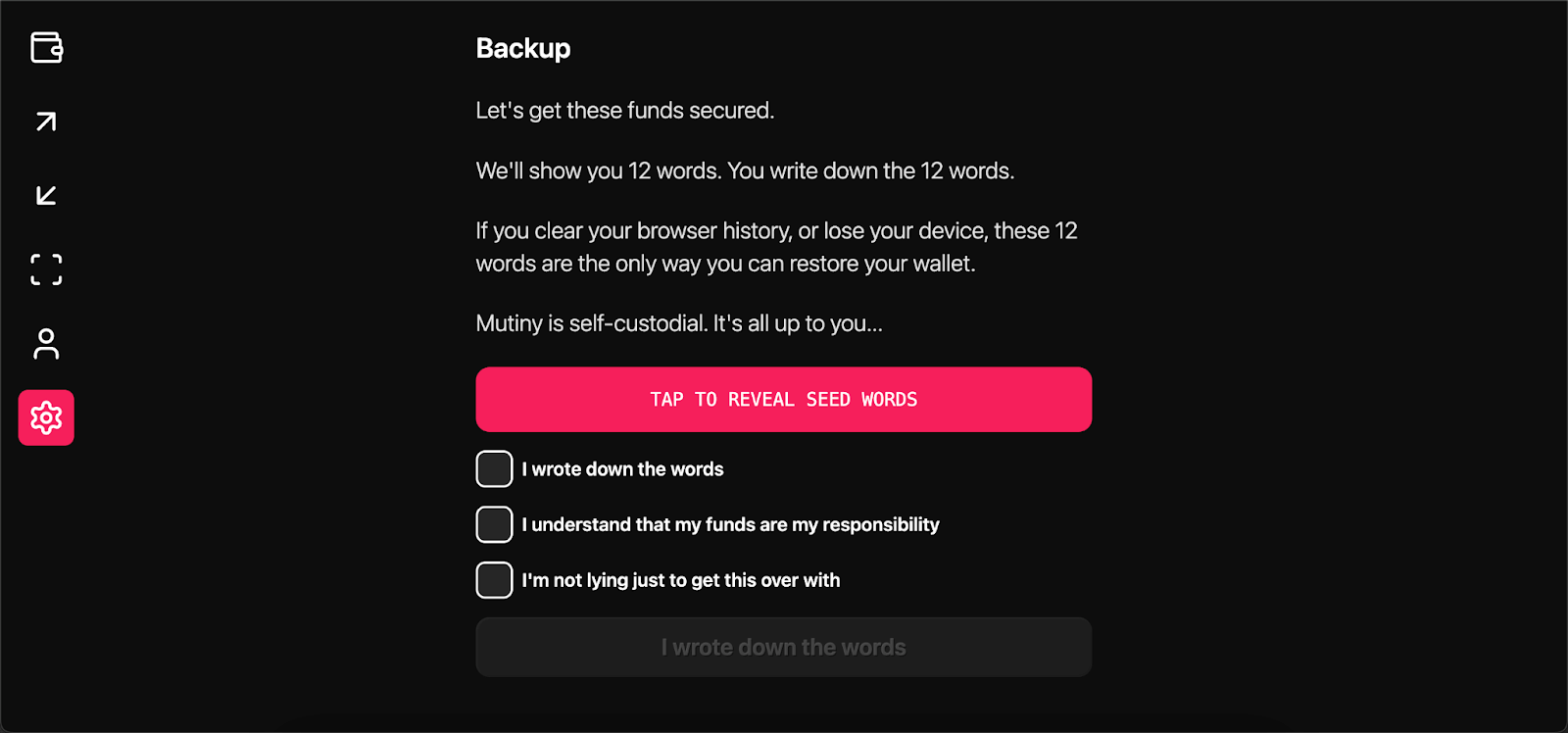
- Once this is done, using your wallet is straightforward. To do this, simply click the “+” button in the bottom right corner to start making transactions.
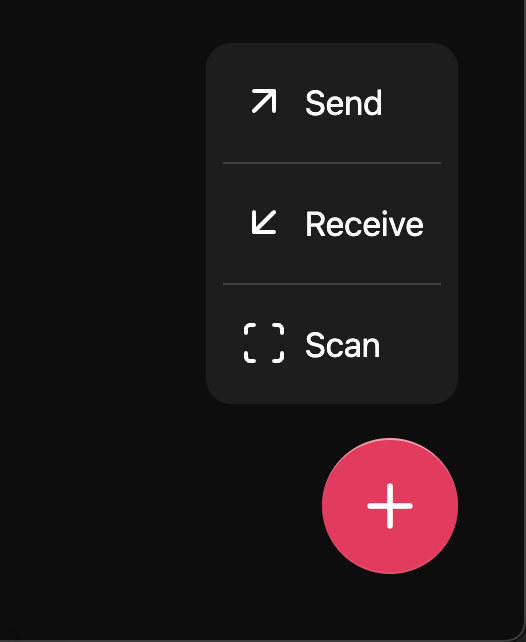
Conclusion
As we’ve seen, Mutiny is not just another Lightning wallet. In addition to being non-custodial on the web, it also integrates with various other protocols, such as Nostr and Fedimint.
One of the main goals of this wallet is to simplify Bitcoin usage for novice and less experienced users. However, it also offers advanced features for “cypherpunks” who enjoy diving into technical details.
It’s important to note that Mutiny is a hot wallet, meaning it’s always connected to the internet. Therefore, it’s not ideal for storing large amounts in this wallet; instead, consider using cold hardware wallets for larger sums.
I hope you enjoyed this article and learned a bit more about this new Lightning wallet.
Oh, and don’t forget to share this article with a friend. It really helps us out!
See you next time!
Share on your social networks:

One of the leading Bitcoin educators in Brazil and the founder of Area Bitcoin, one of the largest Bitcoin schools in the world. She has participated in Bitcoin and Lightning developer seminars by Chaincode (NY) and is a regular speaker at Bitcoin conferences around the world, including Adopting Bitcoin, Satsconf, Bitcoin Atlantis, Surfin Bitcoin, and more.
Did you like this article? Consider buying us a cup of coffee so that we can keep writing new content! ☕

